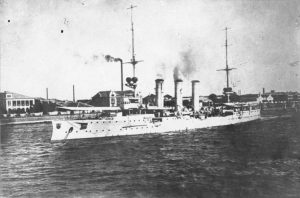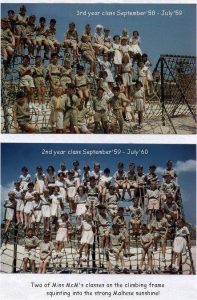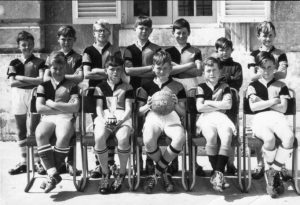The Defensive Walls
- 30th December 1638 – The first stone of the Firenzuola Lines was laid by Grand Master Lascaris. These later became known as the Margherita Lines. The oldest part of these walls is the Verdala Gate opposite the school entrance
- 1670 – Grand Master Cotoner contributed generously out of his own personal resources for the building of the Cottonera Lines. The project was started on 28th August 1670. In Żabbar Gate there is a statue of Grand Master Cotoner
- 1697 – Margherita Lines works were continued by Grand Master Perellos
- 1720 – Grand Master Zondadari had to continue the walls when Perellos died
- 1736 – The Margherita Lines were finished by Grand Master Vilhena
- It took 98 years to build the Margherita Lines
The French in Malta
- June 9th, 1798 – Napoleon arrived in Malta with 472 ships and the army landed the next day
- June 11th, 1798 – Grand Master Hompesch surrendered
- September, 2nd 1798 – The Maltese revolted against the French
- September, 25th 1798 – Nelson arrived and put Alexander Ball in charge of the campaign to overcome the French, who were still inside Valletta and the Cottonera Lines. The French had their guns on the Cottonera Lines that is at the bottom of the football field
- September, 5th 1800 – The French surrendered
The Victorian Fortress of Verdala
- 1814 – With the Treaty of Paris, Malta became officially part of the British Empire
- 1853 – The British decided to build the Verdala Barracks behind the old Verdala Gate and they also made a new gate leading into Cospicua. Above this gate there is the Royal Coat of Arms and the date
- 1854 – The British decided to build a big fortress in front of the barracks. Evidence suggests that the fortress was designed by Major General Sir George Judd Harding K.C.B., R.E. Captain A.D. Craigle R.E. arrived with the 4th Company Royal Sappers and Miners to start the building
The Construction Site
- 1854 – This is the whole area on which the school now stands. Two sets of high walls were built from Verdala Barracks to St Clement’s Bastion on the Cottonera Lines. The area between the walls was levelled off for the erection of new buildings. This was not finished until 1860
- Verdala walls have 384 rifle slits and there are casemates for cannons on each side. The guns were kept in the tunnels which run along the inside of the bastion walls. The tunnels were also used for storing gunpowder and ammunition. Verdala became the main powder store for the Mediterranean Fleet of Britain. Water tanks were built to flood the ammunition stores in case of fire. The main tank under the playground holds more than a million gallons of water. The tunnels are no longer used for storing gunpowder
Regiments stationed at Verdala (The evidence of all this are the badges carved on the roof tops.)
- 1876 – 2nd Battalion North Staffordshire
1880-84 – 1st Battalion South Staffs
1887-89 – 1st Battalion Bedfordshire Signallers
1890-91 – 1st Battalion Bedfordshire Signallers
1892 – 2nd Battalion Connaught Rangers
1893-95 – 1st Battalion North Staffs
1896-98 – Duke of Wellington’s
1907-08 – 1st Battalion Connaught Rangers Signallers
World War I
Some German prisoners-of-war were also at Verdala barracks prison camp. One of these was Karl Doenitz, who was to become the Commander in Chief of the German Navy during the Second World War, and was to succeed Hitler as the head of Germany. Others were officials of the German war ship Emden. Karl Doenitz succeeded Hitler as Chancellor for a very limited span of time. Other prisoners-of-war were Prince Franz Josef Hohenzollern and Captain Karl Friedrich Max von Muller.
1920 – Verdala, Home to White Russian Officers
The White Movement, known as the White Army or White Guard and whose members are known as Whites or White Russians comprised some of the Russian forces, both political and military, which opposed the Bolsheviks after the October Revolution and fought against the Red Army during the Russian Civil War from 1918 to 1921.
It stood in contradistinction to the Reds – the revolutionary Red Army who supported the Soviets and Communism.
Second, the word white had monarchist associations; historically each Russian Tsar was solemnly called the White Tsar, and the monarchist ideal during the civil war was known as the White Idea.
- Aerial View Of Verdala Retrenchment
- Karl Doenitz
- SMS Emden (1908)
- Historical Graffiti along the Retrenchment Walls – Photo 1
- Historical Graffiti along the Retrenchment Walls – Photo 2
- Royal Navy School Photo
- Soccer Team (1965)
Tracing the History of RNS Verdala – Up to the 2nd World War
- The Dockyard School at the dockyard (1800 – 1904)
Senglea (1904 – 1929)
Senglea (1918) – School Certificate (or Matriculation) examination as well as for the Dockyard Apprentice Entry Examination
Malta Government School – St Clement ‘s Bastion in 1925, known as Verdala School
Dockyard School – St Clement’s Bastion in 1929
Dockyard Apprentices’ School or Dockyard Technical College remained within the Dockyard till its closure in 1960
Dockyard Children’s School (1929 – 1940)
St George’s Barracks (1940 – 1942)
World War II at Verdala
- 1940 – Verdala called HMS Euroclydon, and was used to house the crews of submarines Transit camp
1940-1944 – Prisoner of war camp
1943 – Naval Detention Centre
1945 – Demob. Centre; Servicemen en route for ship or flight to UK
What Happened Next?
- Dockyard Children’s School – Reopened at Ta’ Xbiex on 16th May 1946
- Army barracks at Tal-Ħandaq – 1947
- Naval Children’s School – 15th July 1947
- Verdala school was reopened – April 1949
- Change of title to “Royal Naval School” – 1952
- Possibility to house all the Primary section at Verdala – 1954
- Withdrawal of all British Service personnel and families from Malta in 1972
- Primaries reopened late in the Summer Term of 1972
- Royal Naval School closed in 1977
Political Decisions
- In 1971 Malta’s Prime Minister Dom Mintoff was asking for more money for the British base in Malta
- During the Christmas holidays of 1971, a few days before term was due to start, it was announced that all Service dependants were to leave Malta within two weeks and the schools would not reopen
- An agreement was reached by the Maltese and British political leaders
- Two terms later, in September 1972, the school reopened, somewhat reduced in size and with about 50% new staff and 75% new pupils
Final Closure of the School
- Numbers reached 600 by September 1973 and stayed about this level until early 1977 when the final rundown began to bite, causing numbers to decline steadily to the final total of just over 300
- School closed July 1977
The International School of Malta
- 1976 – The International School of Malta opened at Verdala for those students whose parents were in the oil exploration field. This school closed in June
- 1977-1978 – The School resumed under a new name that is The Verdala School of Malta
- October 1987 – The School was also open for Maltese students. Eventually the name of the school was changed to Verdala International School. This school moved to St Andrews, Malta
Verdala as a State School
- September 1984 – The Verdala Boys’ Secondary opened for ex-private school students whose parents had opted for a Government School. The Head of School was Mr Charles Chetcuti
- September 1985 – The Verdala Junior Lyceum was opened for those students who passed from the National Examinations set at the end of Primary Level. Mr Charles Chetcuti remained as headmaster of Verdala Junior Lyceum which eventually became known as Ġużeppi Despott Boys’ Junior Lyceum. A new block was built behind Block F to provide rooms for special lectures and the teaching of Information Technology
Information provided by Ms R. Debattista (Retired Head of Department, Geography)







